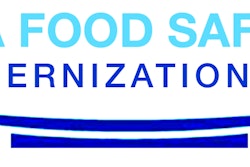
Product recalls occur with such exhaustive regularity that they are becoming lost on many consumers, creating safety and brand damage risks for food producers. The U.S. Department of Agriculture (USDA) is hoping to break through the clutter by adding a new recall alert feature to their FoodKeeper food and beverage freshness app in 2017.
It’s an important step in raising awareness, because it distributes information the way consumers prefer to receive it: on their smartphone However, without the ability to customize alerts for specific concerns, such as an allergy, consumers are bound to be inundated with recall information—so much so that they may still end up tuning out. It is no wonder consumers are experiencing this so-called recall fatigue, with food and other product recalls reaching an all-time high of more than 3,400 last year.
While recall fatigue is real, the FoodKeeper app doesn’t have to add to it. Features that may help include daily or weekly alerts, in addition to real-time notifications. Food producers should build on these efforts in order to reach consumers where they like to consume information, which is increasingly on their mobile devices.
Consider millennials, for example, who are quickly becoming the food industry’s most significant customer demographic. A recent survey found that millennials are the least likely among the U.S. population to respond positively to product recall notices. The consumer survey of more than 1,000 Americans found that millennials are twice as likely as baby boomers to say they usually ignore recall notices. They tend to not take the threats seriously, and throw notifications in the trash.
Make it Fast and Easy
Apps like FoodKeeper can help reverse that trend by appealing to millennials’ desire to opt-in to information sources and consume information quickly and conveniently on their mobile devices. In fact, the new recall notification feature was the result of direct consumer feedback to the USDA’s Food Safety and Inspections Service, which initially developed the app to provide consumers with useful food storage information. The FoodKeeper app is free for iPhone and Android users.
While FoodKeeper is a government notification channel, food producers should also consider developing their own electronic alert capabilities, as well as partnering with retailers for online alerts. More retailers are starting to incorporate recall information into their own apps, and promote the feature as a public service.
One approach is to leverage customer loyalty programs to build a base. Millennials tend to enjoy customer loyalty cards if the programs are fun and engaging. The most effective loyalty program rewards the activities that millennials love to do, like sharing on Instagram or posting product reviews. So while recall notifications are a serious concern, incentivizing consumers by rewarding them for responding to recalls would be a great way to improve recall response rates. Loyalty cards are also a great way to track affected purchasers of a recalled food product, because they provide real-time purchase history and contact information.
The next step is to make it easy for consumers to respond once they receive an electronic notification. Even headline-making recalls won’t necessarily trigger reactions if consumers feel it simply is too much trouble. Food producers facing a recall should still establish a dedicated website and recall hotline so that consumers’ can get answers to their questions and be guided through the process.
The last advantage of electronic notifications through mobile devices is speed. Especially for the most serious recall causes, notifications must happen as quickly as possible to protect the public. In the future, apps may be tailored to alert consumers with specific concerns, such as severe food allergies.
Recall fatigue can be managed; it simply requires an adjustment in how food producers communicate with affected consumers. They can be positively influenced by reaching them where they live digitally and engaging them in the ways they prefer.


















